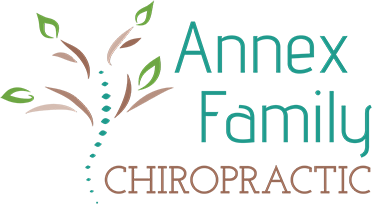For many active individuals, the phrase “no pain, no gain” has become something of a mantra. While dedication to your sport or fitness routine is admirable, the key to peak performance isn’t just about pushing harder—it’s about knowing when to push and when to pause.
As an athlete or fitness enthusiast, you understand the importance of movement. Regular physical activity strengthens muscles, improves cardiovascular health, and enhances performance. Training sessions, practice games, and workouts are essential for skill development and maintaining a competitive edge. But here’s what many don’t realize: the magic doesn’t happen during the workout—it happens during recovery.
The Power of Rest
Rest isn’t just about preventing injury (though that’s crucial). It’s when your body repairs muscle tissue, strengthens neural connections and adapts to the demands you’ve placed on it. Think of rest as your body’s renovation time. Just as a construction crew needs time to implement improvements, your body needs downtime to build you stronger.
Signs You Need More Rest
- Persistent muscle soreness lasting more than 72 hours
- Decreased performance despite consistent training
- Trouble sleeping or feeling unusually fatigued
- Minor injuries that won’t fully heal
- Mood changes or decreased motivation
The Chiropractic Connection
Your nervous system serves as the master control center for athletic performance and recovery. This sophisticated network coordinates everything from explosive power in your muscles to the subtle balance adjustments needed during complex movements. When your spine is properly aligned, your nervous system can function optimally, creating an environment where peak performance becomes possible.
Think of your spine as the foundation of movement. Just as a house needs a stable foundation to withstand stress, your body needs proper spinal alignment to handle the demands of training. Every time you run, jump, lift, or move, your spine and nervous system work together to coordinate these actions with precision.
At our chiropractic clinic in Toronto, we’ve seen that regular chiropractic care helps maintain this vital mind-body connection in several key ways:
Enhanced Recovery Speed Your nervous system governs how quickly your body bounces back from training stress. When nerve signals flow freely, your body can:
- Regulate inflammation more effectively
- Coordinate muscle repair processes
- Balance hormone production for recovery
- Optimize nutrient delivery to tired muscles
Improved Movement Quality Proper spinal alignment contributes to:
- Better range of motion in all major joints
- More fluid movement patterns
- Enhanced body awareness during exercise
- Greater stability during complex movements
- Improved muscle activation patterns
Injury Prevention A well-functioning nervous system helps:
- Maintain proper posture during exercise
- Ensure balanced muscle engagement
- Speed up reaction time to prevent falls or missteps
- Distribute force evenly throughout the body
- Alert you to potential problems before they become serious
Natural Performance Enhancement Regular spinal care supports:
- Better stress adaptation
- More efficient energy use during exercise
- Improved coordination and balance
- Enhanced muscle recruitment patterns
- Optimal breathing mechanics during activity
The beauty of this approach lies in its holistic nature. Rather than focusing on individual symptoms or isolated areas of tension, chiropractic care addresses the entire system that controls your movement and recovery. This comprehensive approach helps create lasting improvements in both performance and recovery capacity.
Finding Your Balance
Everyone’s optimal rest-to-movement ratio is different. Weekend warriors might need more recovery time between intense activities than professional athletes. Parents juggling sports with their kids might need to be strategic about when they schedule their own workouts.
Tips for Better Balance:
- Listen to your body’s signals
- Schedule rest days as deliberately as workout days
- Practice active recovery (light movement) on rest days
- Get regular chiropractic check-ups to maintain optimal function
- Focus on quality sleep as part of your training routine
Remember: Rest isn’t a sign of weakness—it’s a sign of wisdom. The most successful athletes aren’t just the ones who train the hardest; they’re the ones who train the smartest. By finding your perfect balance between movement and rest, you’re not just preventing burnout and injury—you’re setting yourself up for long-term success in your athletic endeavors.
If you’re looking for a chiropractor in Toronto, we’d love to welcome you to Annex Family Chiropractic! Let’s work together to ensure you’re at peak performance. Book an appointment online at https://annexfamilychiropractic.com or call 416-967-4466.
You may also enjoy reading: Start Well, Finish Strong: Your Guide to Lifelong Wellness


